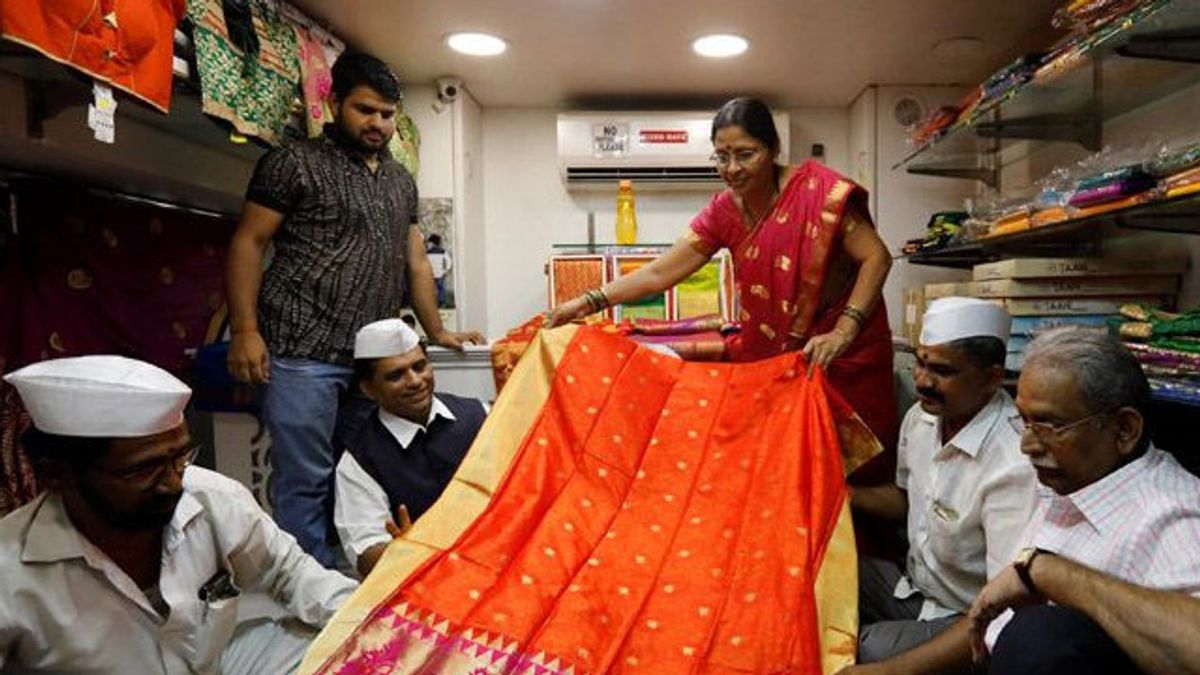JAKARTA - Sari, a traditional dress that symbolizes honor, misery, and cultural diversity, has a rich history for centuries and exhibits Indian art.
Sari's origins are related to the evolution of civilization, trade, and interaction of complicated cultural influences.
As reported by TimesofIndia, quoted by Antara Sunday, August 20, the exact time of Sari's appearance is difficult to determine, but the roots can be traced back to ancient India, namely since 2800-1800 before Masehi (SM), or during the ancient civilization of the Valley of Indus, which is now a region of Pakistan and western India.
The excavation of the Indus Valley has resulted in carvings and statues depicting a wrapped cloth very similar to modern Sari. This initial depiction reveals the clothing enveloping the body, highlighting the sophistication of ancient Indian textile techniques.
History
When Indian history was revealed, that was where Sari's evolution took place. The Veda period (1,500-500 BC) brought a change in clothing style, referring to the seamless cloth worn by women. The term Sari' itself is believed to be from the word Sanskrit Sattika, which refers to a cloth wrapped in the body.
This marks the beginning of Sari as we know it today, characterized by its untuned shape and versatile cloth. For centuries, various dynasties and kingdoms, such as Maurya, Gupta, and Mughal, contributed to the development of the essence by influencing its design, fabric and pattern styles.
The Mughal period, in particular, played an important role in shaping Sari's aesthetics. Mughal introduced intricate embroidery, luxurious fabrics such as silk, and blending elements of Persian and Indian design, giving birth to an iconic style known as the work of "zari" or "zarozi". In this period the essence was not only functional clothing but also a canvas as an artistic expression.
As trade routes expand and cultural interactions develop, Sari's influence goes beyond the limit. It finds its way to various regions in India, each giving it a garment with a different taste. The Indian style of the Gujari section, for example, shows off its bright colors and mirror works, while its style emphasizes rich texture and decoration boundaries.
Evolution
Sari also evolved to accommodate changes in the role of women in society. During the colonial era, when British influence was possessed by Indian culture, the essence began to be seen as a symbol of tradition and resistance.
Indian women, led by figures such as Rani Laxmi Bai and Sarojini Naidu, use sari as a symbol of national pride and unity in their struggle for independence.
In post-independence India, Sari continues to grow, adapting to changes in the lifestyle and preferences of modern women today.
The designers began experimenting with fabrics, prints, and pattern styles, giving rise to the innovative interpretation of classic garment. Sari's cap is exhibited on the global runway, captivates international audiences and strengthens her status as a cultural masterpiece.
Today, Sari is more than just a piece of clothing; it is a living proof of India's rich heritage, expertise, and diversity. From the luxurious silk juice in South India to the magic of the colorful hand-weaving tools in the North, the essence reflects many stories woven into the fabric.
While the traditional pattern style survives, contemporary women also embrace a mix of old and new styles, experimenting with innovative ways to hang and organize sari for various events.
The sari journey from the ancient Indus Valley Civilization to its contemporary form is a testament to its lasting appeal and adaptability. It has gone through a wave of time, blending traditions with modernity and symbolizing the essence of Indian culture.
With each fold, Sari tells the story of evolution, resilience, and endowment that continues to captivate the heart around the world.
The English, Chinese, Japanese, Arabic, and French versions are automatically generated by the AI. So there may still be inaccuracies in translating, please always see Indonesian as our main language. (system supported by DigitalSiber.id)









